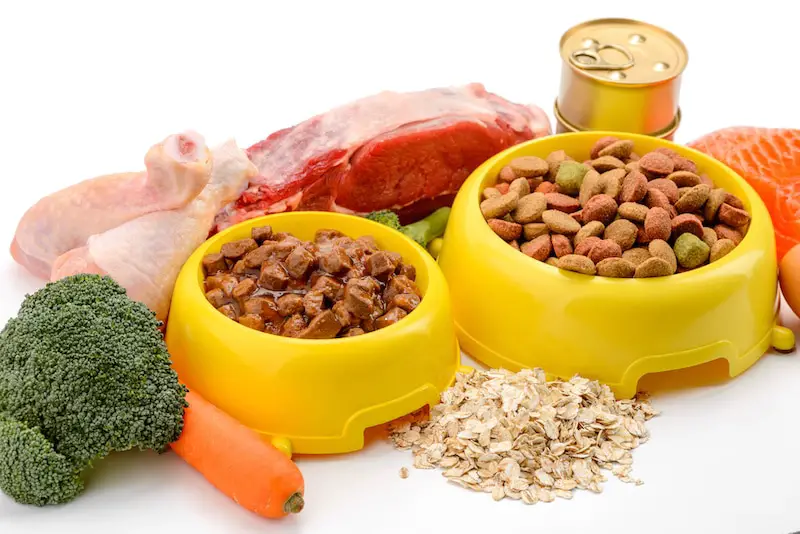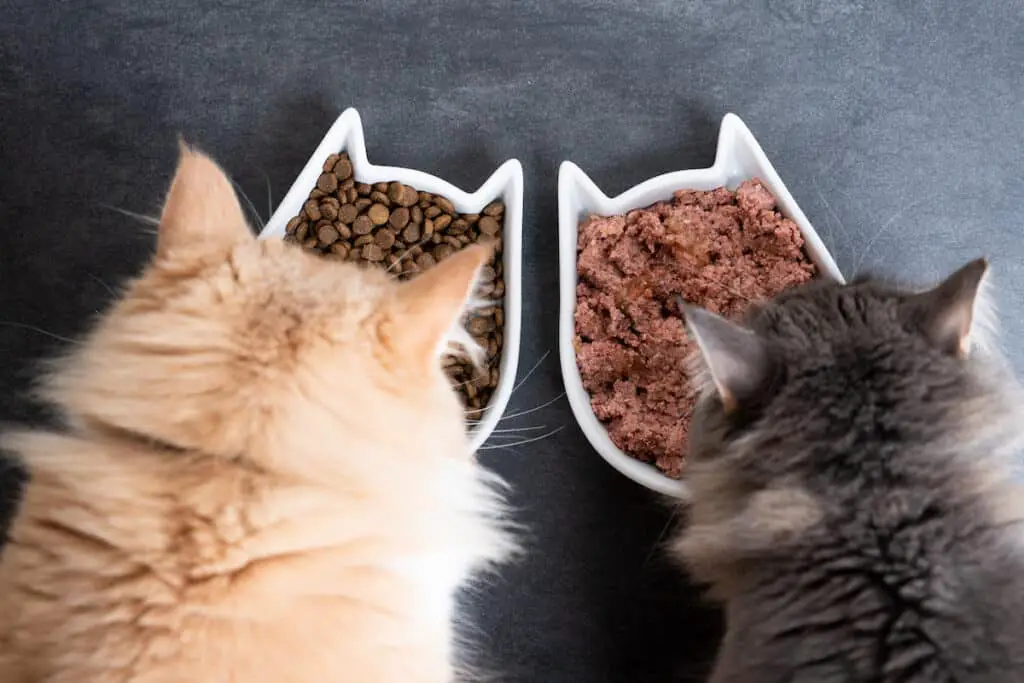When considering dry vs. wet cat food, the main differences are water content, healthiness, dental health, price and convenience. Wet cat food is considered superior to dry food because it’s healthier and provides more nutrients your cat needs. Feeding your cat wet food or a combination of dry and wet food is essential in helping your cat live a long and healthy life.
1. Water Content
The main difference between dry and wet cat food is the water content. Wet cat food is about 70% water, while dry food is only 10% water. So why is this so important? Well, cats get most of their water from their food. If they’re eating mostly dry food, they’re at higher risk of dehydration and developing other issues such as Feline Lower Urinary Tract Infection (FLUTD) or Feline Idiopathic Cystitis.
2. General Health
One of the most important factors to consider in terms of dry vs. wet food is the healthiness of the diet. Dry cat food is denser in calories, and can quickly cause weight gain in cats if left to free feed. Obese cats are at high risk of a whole host of diseases, so helping your cat lose weight might be necessary.
As mentioned above, wet food contains more water, which is essential is keeping your cat hydrated. Dry food only diets run the risk of dehydration and developing urinary tract problems.
Finally most dry food on the market is less nutritious than wet food. Most dry foods contain higher amounts of carbohydrates (usually in the form of corn) while wet food contains higher levels of protein and fat. Most wet foods have other vitamins and minerals important for health that dry foods do not contain.

3. Dental Health
Because dry food has a higher carbohydrate content, cats eating it run a higher risk of developing dental problems like tooth decay and gum disease. You might want to consider brushing your cat’s teeth if you’re going to feed only dry food.
On the flip side, eating only soft foods like wet cat food can cause the jaw muscles and teeth to become weak. Chomping on hard food they have to break down keeps the chewing parts healthy.
4. Packaging
The most obvious different between dry and wet cat food is the packaging. Dry food comes in bulk amounts in a bag that comes in different sizes. Wet cat food comes in a can or plastic container, and is stored in smaller portions.
5. Price
Most people feed their cat dry food because of the lower price and convenience compared to wet cat food. Dry food can be 50-70% cheaper than wet cat food, which is significant for people on a budget. Our recommendation is that if price is an issue for you, try doing a combination of wet and dry food. Feed your cat half a can of wet food in the morning and then free feed or portion on dry food for the rest of the time.
6. Convenience
As mentioned before, convenience plays a large role in choose dry vs. wet cat food. Wet cat food requires more effort as you have to set out reasonable portions each time. Setting out too much will run the risk of the food going bad as wet cat food doesn’t last as long at room temperature. If you portion out part of a can each time, then you also have to store the can.
On the other hand, dry cat food can sit out much longer. Also, you can leave out several portions at once, keeping you from having to go back and restock your cat’s food dish multiple times per day.
Should I Feed My Cat Dry or Wet Food?
Considering all the pros and cons above, feeding your cat wet food or a combination or dry and wet food is the best route. Studies have shown that dry only diets leads to higher incidences of diabetes, urinary problems and other issues in cats.
While dry cat food might be cheaper and more convenient to feed your cat, you’ll pay the price in the long run with your cat’s health. Consider buying higher quality brands of dry cat food if you must.
A third option is to make your own cat food right at home. Not only is homemade cat food healthier, but it can also save you money in the long run. We’ve created the ultimate guide to making your own cat food to get you started.
Read More: How Much Wet Food to Feed a Cat Every Day.














